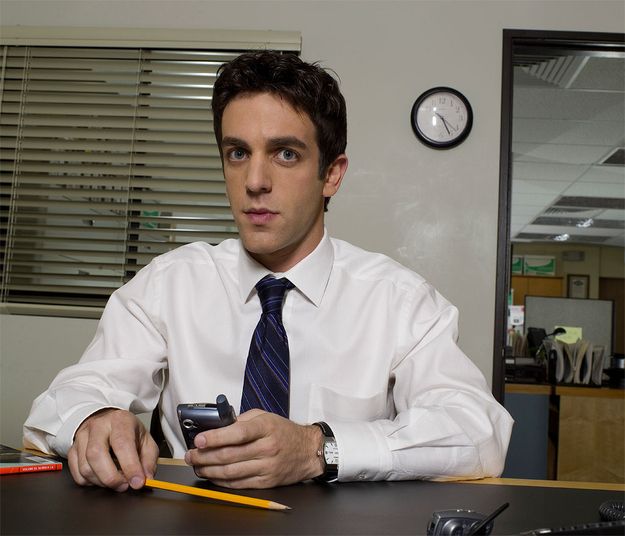
Did you hire Ryan Howard? Falling for Fake Candidates is Hard to Avoid in 2023
So, you did it. You hired a Ryan. They duped you in the interview process. They lied, they manipulated, and they won. Why does this happen so much now? And how do we stop it from happening? BJ Novak nailed the role of sleazy and cunning Ryan Howard in The Office. But it’s just sad that the tech industry is flooded with people pulling tricks like his in real life.
The rise of fake candidates in the tech industry is a phenomenon that has been exacerbated by several factors. According to a 2022 article by Emma Goldberg in The New York Times, the shift towards virtual interviewing and the normalization of remote work has created an environment ripe for deception. Goldberg in her article shares a story of a candidate who had a friend answer technical questions during a video interview while he merely moved his lips on screen. He let himself be a puppet! This just shows the extent to which some job seekers are willing to go to deceive potential employers.
Goldberg wrote that article before the rise of ChatGPT and other AI tools like it, so now the Ryans of the world can wreak even more havoc by creating content quickly that looks legit. We could see a world where a deep fake voice of the candidate is answering questions. They simply feed into a prompt the interview questions and let their fake voice recite the answer.
Like Ryan, fake candidates often rely on buzzwords and exaggerated claims to present themselves as highly qualified individuals. A fake candidate uses the right trending terms and a list of Fortune 500 clients as former employers on their resume. This makes it easy to hide in the numbers if someone calls them out on which team they worked on at the company listed.
Max Levitan, a Recruiting Team Lead at Agile Resources, has a couple of posts about this heartache for the tech space. As Max explains, “The issue is… most recruiters have no clue how to lie detect, identify patterns, and understand technology enough to truly identify what is real and what is bullsh*t. It’s a difficult and acquired skill, but those who get good at it are the ones who win.” Levitan could be right; it would take hundreds or thousands of interviews to know how to spot the fakes. So, how can employers and recruiters avoid falling for the fake candidate scam? Goldberg suggests several strategies, including the use of situational and behavioral interview questions, which are harder for candidates to fake, and the expectation for candidates to turn on their cameras during video interviews. These strategies align with Levitan’s advice, emphasizing the importance of thorough vetting and technical interviews in identifying genuine talent.
Here are four ways to minimize your risk of hiring a Ryan…
- **Implement Mandatory Video Calls:** To ensure that the person you’re interviewing is the actual candidate, make video calls mandatory for all interviews. During the call, ensure that the candidate’s face and hands are clearly visible. This will allow you to observe their body language and ensure they are the ones responding to the questions.
**Actions to Take:** Use video conferencing tools like Zoom, Microsoft Teams, or Google Meet for conducting interviews. Make it a standard part of your interview process and inform candidates in advance that they will be required to turn on their video during the interview.
- **Request Profiles with Image and Identity Proof:** To verify the identity of the candidate, ask them to provide a profile with an image and some form of identity proof. This could be a LinkedIn profile, a professional website, or a portfolio.
**Actions to Take:** Include this requirement in your job postings or inform candidates when they apply. You can also use background check services to verify the identity and credentials of the candidates.
- **Ask Tricky or Real-Time Situation-Based Questions:** To test the candidate’s knowledge and ability to think on their feet, ask questions based on real-time situations or problems that they would need to solve in the role they’re applying for. This can help you gauge their actual skills and can be difficult for a fake candidate to prepare for in advance.
**Actions to Take:** Develop a set of scenario-based questions relevant to the role. These could be technical problems to solve for a developer role, design challenges for a designer role, or strategic questions for a managerial role. During the interview, observe how the candidate approaches the problem, their thought process, and the final solution.
- **Develop a Process to Report and Track Fake Candidates:** If you encounter a fake candidate, there should be a process in place to report and track them to prevent them from wasting time at other companies.
**Actions to Take:** This could involve reporting them to job platforms, maintaining an internal database of fake candidates, or even reporting them to authorities in severe cases. Develop a clear policy around this and ensure your HR team is trained on it.
By incorporating these strategies and being vigilant during the hiring process, employers and recruiters can minimize the risk of falling for fake candidates like Ryan Howard. The tech job market of 2023 demands a thorough approach to talent assessment, allowing organizations to identify genuine candidates who possess the skills and experience they claim.


